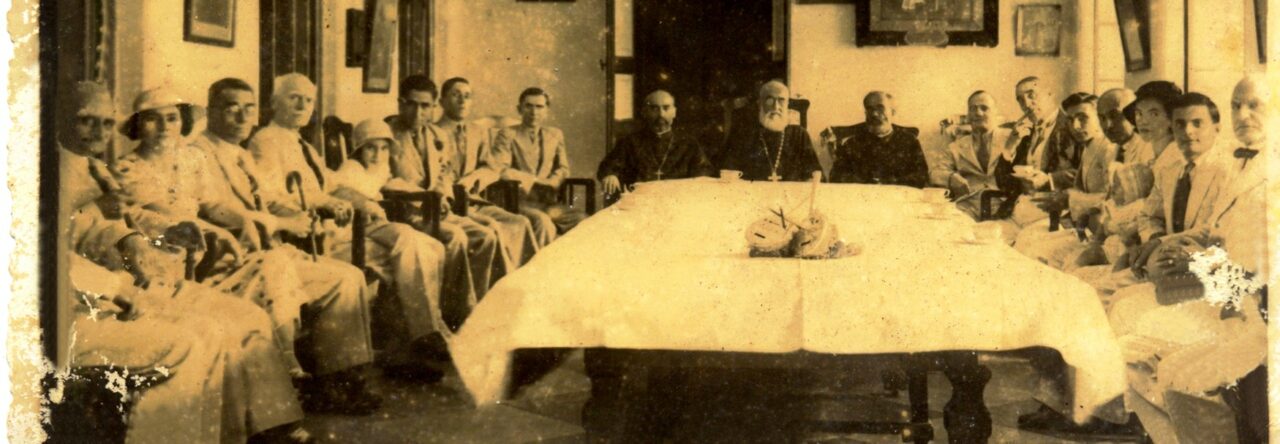
Looking down onto the church
This Holy Church was erected in the name of the holy Apostle Peter. Mr. Jacob Petrus of Hamadan in Persia, better known as Hakob Hamadanchi built St. Peter Armenian Church of Bombay which is situated in Medows Street. The Armenian community of Bombay lived mainly in Armenian Lane a locality close to the church, where they flourished as traders and lived in opulent residences.
At the foot of the altar of the church is a square tablet with an inscription in Armenian, the translation of which is: “This holy church was erected in the name of the holy Apostle Peter, during the Patriarchate of His Holiness Lucas, the Catholicos of all the Armenians, by the munificence of Mr. Jacob of Hamadan, to the memory of his late parents, Mr. Petrus, his father, and Zanazan Khatoon his mother, the foundation-stone of which was laid by Archbishop James, who was on an evangelical tour in India on bhelaf of the Holy See of Etchmiatzin in the year of our Lord 1796, on the 14th day of Thirah (12th October)”. Another tablet, over the door of the sacristy, bears the following inscription, which says “The outside parts of this holy church with the budlings attached thereto were repaired by the munificence of Agah Jacob, son of Arratoon Thageantz, to the memory of his late mother, the noble lady Thamar, and his sister [Miss] Anna, dead in Christ. The repairs were executed through the instrumentality of Archbishop James on the 3rd day of Shams [4th April] in the year of our Lord 1801”.
The church in Bombay was the sister church to the Armenian church at Surat. When the Surat Church was finally closed down in 1861 because there were no Armenian community left there, the Wardens of Bombay, had all the sacred books, vessels and vestments of Surat brought to Bombay for preservation there. Amongst these was a manuscript Bible in the Armenian language which was written at Surat in 1658, there was also an old chasuble (shoorjar) belonging to the Surat Church on which the year 1782 was beautifully embroidered in gold thread.
The early Armenians in Bombay “…….wore Persian dress, and dyed their hair and whiskers with henna. Armenian ladies passed their time either engaged in the care of their families, or in receiving and paying visits, drinking coffee or sherbet, embroidering and making delicious confections of Hulwah and various sweetmeats. They have very considerable influence on their families, understand business admirably, and are commonly entrusted with the full control of their property. Their condition is easy and agreeable, little restraint being placed upon their conduct, a slight degree of personal seclusion being considered honorable and dignified”.
The last person to be buried in the Armenian churchyard at Bombay, and as a mark of deep respect, was Mr. William Michael, the warden of the church for several years, who died on the 23rd July 1886, aged 55 years.
Gradually it decayed and was replaced by a new and beautiful Church in 1957. It was designed by a well known Armenian architect of Beyrouth, Mr. M.H. Altounian and was constructed on the plot of the old church. The blessing of the foundation stone o was performed by His Grace Archbishop Yegheshe Derderian of Jerusalem during a visit to Bombay in June 1956 in the company of Revd. Father Shahe Ajamian. The new church was consecrated on the 14th April 1957 by His Grace Bishop Terenik Poladian. A six storey building was erected in front of it and named “Ararat” (after Mount Ararat of Biblical times on which Noah’s Ark rested”). The “Ararat” building is the property of the church.
